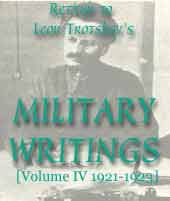
Fraternal thanks!
Soviet Karelia has been cleared by the Red regiments of the White bands organised by Finnish officers with the resources of the Finnish and other bourgeoisies. [1] Under the very hard conditions of the North, amid the cold wastes, sometimes up to their middles in snow under which the water has not frozen, the soldiers of the revolution have once more done their duty to the end.
The crime committed by the ruling classes of Finland and its protectors has imposed fresh hardships and losses upon the working masses of Russia and has entered fresh feats of heroism in the history of the Red Army.
The Red Army and the Red Navy are proud of their Karelian units and enthusiastically give them fraternal thanks.
The Revolutionary War Council of the Republic will take all measures to record and reward the exploits of the most outstanding heroes, and to imprint in the consciousness of the Red Army the entire history of this harsh campaign.
The north-western frontier of the Soviet Federation has once more been re-established at the price of blood. The Red Army and the Red Navy count firmly on the Workers’ and Peasants’ Government to secure our frontier with Finland against fresh predatory and treacherous attempts.
Long live Soviet Karelia! Glory to the Red warriors, defenders and liberators of the working people of Karelia!
1. So early as the autumn of 1921 intense agitation began in certain rural areas of roadless Karelia for separation from Russia and union with Finland. In October 1921 two bands of Whites, each 70 men strong, entered Karelia from Finnish territory. On November 19 one of these bands blew up a bridge on the Murmansk Railway, and at the same time disturbances broke out in Ukhtitsa volost. A Karelian Government, organised with Finnish help, and in receipt of substantial material backing, tried to reinforce the bandits by conscripting peasants. The bourgeois government of Finland requested the League of Nations to recognise the self-determination of ‘rebel’ Karelia and to make Soviet Russia refrain from combating the bands in Karelia. Already by the beginning of January 1922 the White Karelian bands, together with small guerrilla detachments, numbered up to 5,000 men. The Whites’ command received direct instructions and plentiful support from the leaders of Finland’s Schutzkorps [2] organisations.
By the end of December 1921 units of the 10th, 11th and 56th Infantry Divisions had been concentrated for the purpose of liquidating this invasion of Karelia. The cold climate, the extremely broken terrain, which in winter could be traversed only on skis, and unfamiliarity with the country, all greatly hindered our operations.
From the middle of January our units went over to a general offensive and quickly defeated the White Finns, pushing them back into Finnish territory.
2. The Schutzkorps (sometimes referred to as the ‘civic guard’ in English books) was broadly similar to Britain’s Territorial Army or the US National Guard: a voluntary force, it had formed the backbone of Mannerheim’s army in the Finnish civil war.

Last updated on: 28.12.2006